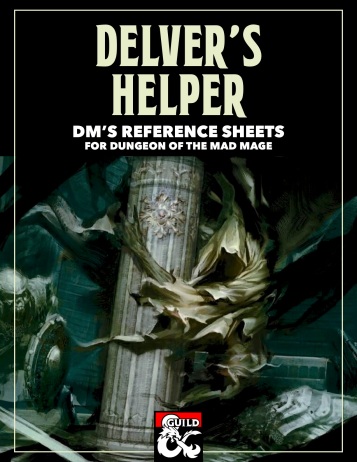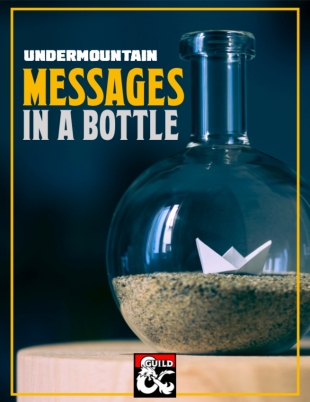The Dungeons and Dragons adventure Waterdeep: Dungeon of the Mad Mage is truly an ambitious work. As D&D adventures go, it is big, thick and meaty.
 There is a lot of content here, packed with the briefest of descriptions. Even so, it is 320 pages long and sparsely illustrated. It needs to be digested in chunks. And the whole is, indeed, greater than any individual parts.
There is a lot of content here, packed with the briefest of descriptions. Even so, it is 320 pages long and sparsely illustrated. It needs to be digested in chunks. And the whole is, indeed, greater than any individual parts.
Largely, it is a dungeon crawl. And such adventures are the sort that often lead Dungeon Masters to think they can be run — to borrow an old phrase — “right out of the box.” In those games, the DM delivers a cold reading of the encounter entry to the players and off they go.
Your normal dungeon crawl experience goes like this: a) adventurers open door to the next chamber they find, b) DM describes the room, including any monsters and interesting items, c) adventurers fight the monsters and loot the contents.
The party then saunters down the hallway until they come to the next chamber and the experience repeats.
DMs can perform their expected duties in such a perfunctory fashion with little or no preparation. But Dungeon of the Mad Mage is so tersely written, DMs risk overlooking or failing to present some of the more compelling story threads that run through it.
These storylines are the payoff for running Dungeon of the Mad Mage with an eye toward these details, usually revealed through interaction with any of its NPC denizens.
Delver’s Helper
Yet, while I would advise a DM to make preparation a priority before running any session of this adventure, I would rather see a DM run it cold than not at all.
Time is a precious commodity, and for some DMs, real-world concerns don’t permit that activity. It’s enough to get the gang together and play.
That’s why I designed Delver’s Helper for the DM’s Guild.
Delver’s Helper provides ready-reference sheets that a DM can have on hand while the party adventures in the first four levels of the adventure, as well as the underground town of scoundrels that is Skullport on Level 3.
Mostly, it’s a list of named NPCs the adventurers might encounter on any given level. There is room for the DM to jot down notes on how they are going to portray any given NPC. These can be handy if the NPC appears again, but better yet, serve as a reminder to a DM so they vary how they describe and act out those NPCs.
For example, the NPC on Level 1 had a limp, so let’s not use that distinguishing feature again.
I also included name charts for the monstrous races that are encountered. Invariably the party will want to interrogate a bugbear or troglodyte. “What’s your name?” Now, the DM can have a ready answer with a quick roll of the d20.
I also included lists of wandering monsters found on each level and a list of the magic spells party members might find useful. Often a party might mind it needs a particular spell and no way of casting it. If a DM finds that the party is truly in need of help, the list is a good way to salt the dungeon with the appropriate scroll or wand.
It includes a few suggestions I included that a DM might find useful for enhancing the experience. These are ways to add depth to the experience or fun at the table, using the information provided in the encounters as a springboard to other things.
Lastly, it includes a blank template of the reference sheet, in the event a DM wants to prepare their own for deeper levels of the dungeon.



 When I was developing
When I was developing